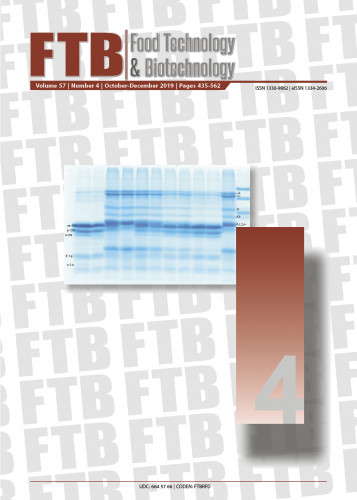This study investigates the effect of industrial scale filtration of fresh monovarietal virgin olive oil from Buža and Istarska bjelica cultivars on their volatiles, total phenols and sensory characteristics, and compares the oil samples clarified by filtration with those clarified by natural sedimentation/decantation after six months of storage. Filtration had a different effect on volatiles from the oil samples obtained from different cultivars. In the oil from Buža cultivar immediately after filtration only the amount of (Z)-2-pentenol slightly increased, but in Istarska bjelica the oil filtration affected eight compounds (the amount of hexanal, (E)-2-pentenal, (Z)-3-hexenal, (Z)-2-pentenol and (Z)-3-hexen-1-ol increased, while of hexyl acetate, (E)-2-penten-1-ol and (E)-2-hexen-1-ol decreased). In fresh filtered oil from Buža cultivar a slight decrease of total phenols was observed, while in those from Istarska bjelica the decrease was sharp, causing a decrease in the pungency and bitterness. Sedimentation/decantation had advantages over oil filtration of both cultivars, due to improved effect on the preservation of the sensory profile and the level of total phenols. Tentative aroma profiles based on odorant series obtained from the odour activity values were compared to the actual olive oil sensory profiles. These results could have a high level of applications in the olive oil industry for the optimization of the technology for obtaining monovarietal virgin olive oil with preserved specific and typical sensory characteristics, but also may serve experts to choose an appropriate virgin olive oil clarification method prior to analysis of volatile compounds.; U ovom je radu ispitan utjecaj filtracije svježih sortnih djevičanskih maslinovih ulja Buže i Istarske bjelice u industrijskom mjerilu na sastav hlapljivih tvari, ukupnih fenola te senzorska svojstva, a uzorci ulja izbistreni filtracijom uspoređeni su s onima koji su izbistreni prirodnom sedimentacijom/dekantacijom nakon šest mjeseci skladištenja. Filtracija je različito utjecala na sastav hlapljivih tvari uzoraka ulja dobivenih od različitih sorata. U ulju sorte Buža je nakon filtracije lagano porastao samo udjel (Z)-2-pentenola, dok se u ulju Istarske bjelice promijenio udjel osam spojeva nakon filtracije (udjeli heksanala, (E)-2-pentenala, (Z)-3-heksenala, (Z)-2-pentenola i (Z)-3-heksen-1-ola su porasli, dok su se udjeli heksil acetata, (E)-2-penten-1-ola i (E)-2-heksen-1-ola smanjili). U svježe filtriranom ulju sorte Buža opaženo je blago smanjenje udjela ukupnih fenola, dok je u ulju sorte Istarska bjelica to smanjenje bilo izraženo, što je uzrokovalo smanjenje intenziteta pikantnosti i gorčine ulja.
Sažetak

 Food technology and biotechnology : journal of the Faculty of Food Technology and Biotechnology, University of Zagreb, Zagreb, Croatia : 57,4(2019) / editor-in-chief Vladimir Mrša.
Food technology and biotechnology : journal of the Faculty of Food Technology and Biotechnology, University of Zagreb, Zagreb, Croatia : 57,4(2019) / editor-in-chief Vladimir Mrša.